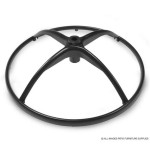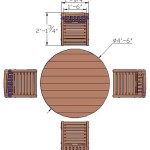```html
Patio Floor Designs: Enhancing Outdoor Living Spaces
The patio serves as an extension of indoor living spaces, providing an area for relaxation, entertainment, and connection with the outdoors. A well-designed patio floor significantly contributes to the overall aesthetic appeal and functionality of this space. Consideration of various factors, including material durability, design style, and budget, is essential when selecting patio floor designs.
Material Selection: Durability and Aesthetics
The choice of material is a primary determinant of the patio floor's longevity and visual impact. Several options are available, each with unique characteristics regarding cost, maintenance, and aesthetic qualities.
Concrete remains a popular choice due to its versatility and durability. Concrete can be poured in place, pre-cast into pavers, or stamped with various patterns and textures. This allows for a wide range of design possibilities, from a simple, smooth surface to intricate designs that mimic natural stone.
Brick offers a classic and timeless appearance. Its warm tones and textured surface create a welcoming atmosphere. Brick patios are durable and can withstand harsh weather conditions. However, brick requires more maintenance than concrete, as it is susceptible to staining and requires periodic sealing to prevent water damage.
Natural stone, such as flagstone, slate, and travertine, provides a sophisticated and natural look. Each stone is unique in color and texture, adding character to the patio. Natural stone is durable and long-lasting, but it can be more expensive than other materials. Installation can also be more complex, often requiring professional expertise.
Wood decking offers a warm and inviting feel. It is comfortable underfoot and can be a cost-effective option, especially if using readily available lumber. However, wood requires regular maintenance, including cleaning, staining, and sealing, to prevent rot and insect damage. Composite decking, made from recycled plastic and wood fibers, offers a low-maintenance alternative to natural wood. It resists fading, staining, and rotting, making it a durable option for patio flooring.
Gravel provides a rustic and informal look. It is a permeable material, allowing water to drain easily, and it is relatively inexpensive. However, gravel can be difficult to walk on, especially with heels, and it requires regular raking to maintain a neat appearance. Weed control is also an ongoing concern with gravel patios.
Tile offers a wide range of colors, patterns, and textures. Porcelain tile is a popular choice for patios because it is durable, water-resistant, and easy to clean. However, tile can be slippery when wet, so it is important to choose a tile with a textured surface to prevent falls. Installation requires careful preparation and professional expertise to ensure proper drainage and prevent cracking.
Design Considerations: Style and Functionality
Beyond the choice of material, the design of the patio floor significantly impacts the overall aesthetic and functionality of the space. Factors such as pattern, color, and layout should be carefully considered to create a cohesive and visually appealing design.
Pattern selection plays a crucial role in the visual appeal of the patio. Running bond, herringbone, and basketweave are common patterns for brick and paver patios. These patterns can add visual interest and create a sense of movement. For concrete patios, stamping can be used to create a variety of patterns, including those that mimic natural stone or brick.
Color palettes should complement the surrounding landscape and the architectural style of the house. Neutral colors, such as gray, beige, and brown, are versatile and can blend seamlessly with any environment. Brighter colors can add a pop of personality, but they should be used sparingly to avoid overwhelming the space. The color of the grout or joint filler can also affect the overall look of the patio. A contrasting grout color can accentuate the pattern, while a matching grout color can create a more seamless look.
Layout considerations include the size and shape of the patio, as well as its relationship to the surrounding landscape. A well-designed patio should be proportional to the house and the yard. The shape of the patio should complement the architectural style of the house and the surrounding landscape. Consider incorporating curves and angles to create a more dynamic and interesting space.
Drainage is a critical element in patio design. Proper drainage prevents water from pooling on the surface, which can lead to damage and safety hazards. The patio should be sloped slightly away from the house to allow water to drain away. Drainage systems, such as French drains or surface drains, may be necessary in areas with heavy rainfall.
Accessibility is another important consideration, especially for individuals with mobility issues. The patio should have a smooth, even surface that is easy to navigate. Ramps or gentle slopes can be used to provide access for wheelchairs and strollers. Consider using materials with a non-slip surface to prevent falls.
Installation and Maintenance: Ensuring Longevity
Proper installation is crucial for ensuring the longevity and performance of the patio floor. Improper installation can lead to problems such as cracking, settling, and water damage. Maintenance is also essential for preserving the appearance and functionality of the patio over time.
Professional installation is often recommended, especially for complex projects or when working with materials such as natural stone or tile. A professional installer will have the experience and expertise to ensure that the patio is properly installed, with proper drainage and support. DIY installation is possible for simpler projects, but it requires careful planning, preparation, and attention to detail.
Surface preparation is a critical step in the installation process. The area should be excavated to the proper depth, and a base of compacted gravel should be installed to provide a stable foundation. A leveling layer of sand or mortar should be used to create a smooth, even surface for the patio flooring material. Proper compaction is essential to prevent settling and cracking.
Sealing is often recommended to protect the patio floor from staining, water damage, and fading. The type of sealant will depend on the material used. Concrete sealers, brick sealers, and stone sealers are available. Re-application of sealant is necessary periodically to maintain its effectiveness.
Cleaning is essential for removing dirt, debris, and stains. Regular sweeping or blowing can help to keep the patio clean. Pressure washing can be used to remove stubborn stains, but it should be done carefully to avoid damaging the surface. Avoid using harsh chemicals or abrasive cleaners, as these can damage the patio floor.
Repairing cracks and damage promptly is crucial to prevent further deterioration. Small cracks can be filled with a patching compound. Larger cracks may require more extensive repairs. Damaged or broken pavers or tiles should be replaced as soon as possible to prevent safety hazards.
Weed control is an ongoing task for patios, especially those made of gravel or pavers. Weeds can be removed by hand or with a weed killer. A pre-emergent herbicide can be used to prevent weeds from growing. Keeping the patio surface clean and free of dirt and debris can also help to prevent weed growth.
```
Creative Patio Design Ideas For Outdoor Living The Stone Flooring

11 Fantastic Patio Flooring Ideas To Transform Your Home

Outdoor Flooring Ideas That Will Rejuvenate Your Backyard Space

Top 7 Est Patio Flooring To Choose From

Trendy Ideas For Patio Flooring Darbylanefurniture Com Tiles Stones

Design Outdoor Floors Yourmatch T20 Supergres

12 Diy Inspiring Patio Design Ideas Backyard Flooring

Patio Floor Concrete Pebble Brick Flooring Floors Outdoor Gharexpert Com

The Solution To Decorating Concrete Patios Porches

Patio Floor Concrete Pebble Brick Flooring Floors Outdoor Gharexpert Com








